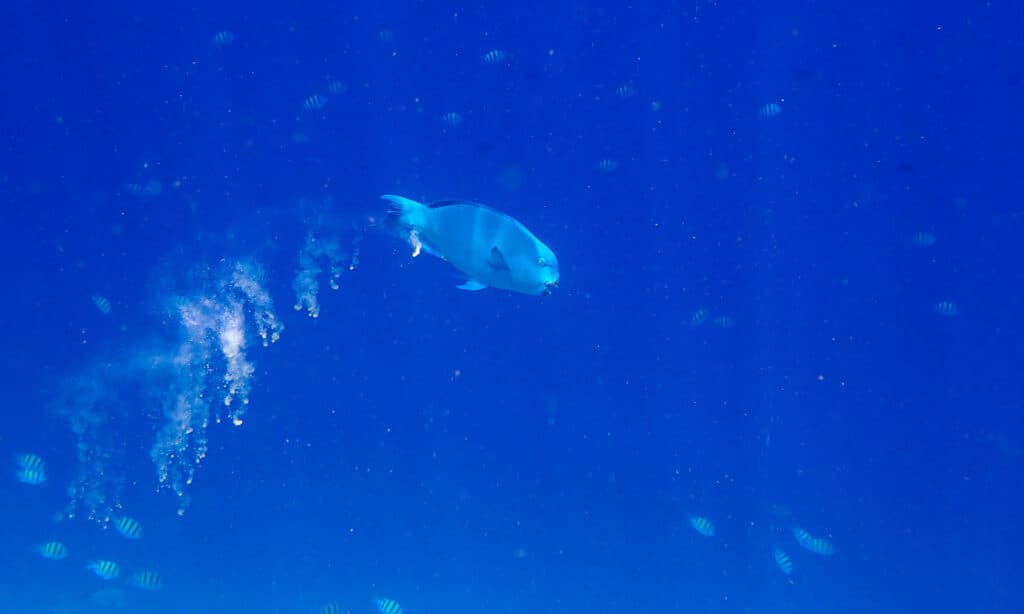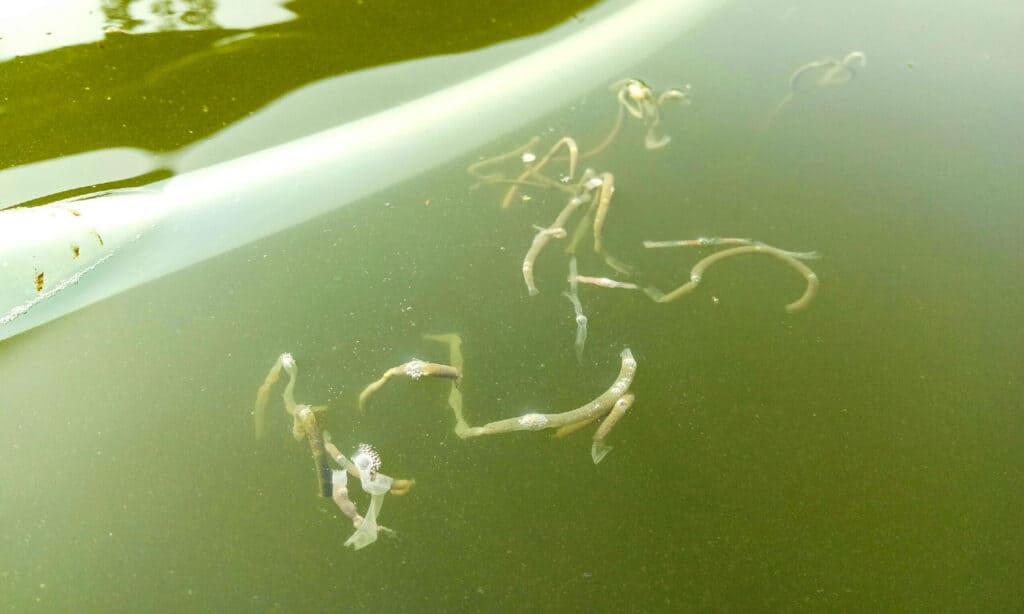If you’re a fish lover and think you know all there is to this lovely aquatic animal, here’s a shocker: you probably don’t. For starters, no one even knows how many different types of fish there are worldwide. Currently, we know that there are over 33,000 fish species; but scientists keep discovering more now and again.
However, for easy identification, fish have three groups: jawless fish (Agnatha), bony fish (Osteichthyes), and cartilaginous fish (Chondrichthyes). As the most diverse vertebrates in the world, fish may have distinct characteristics. However, what makes them all fish is that they are cold-blooded animals, live in the water, and have swim bladders, fins, and gills.
We know that fish can swim and have specialized organs for movement, but can they poop? If they can, what does their poop look like, and how often do they defecate? We’ll discuss these and more in detail throughout this article.
Do Fish Poop and Pee?

Fish have a cloaca (an anal vent) that allows them to expel their excreta.
©Najih_Walydh/Shutterstock.com
Yes, fish can pass feces and urine, and you’re about to learn how. First, like humans, fish have two kidneys (called the pronephros and mesonephros), and they’re primarily responsible for processing their waste products. However, they don’t have bladders, and their urethras are much shorter than those of humans. So, besides filtering blood, their kidney also helps to remove their wastes.
That said, fish have a cloaca (an anal vent) that allows them expel their excreta. While some fish pass urine and poop from the same place, other species may have different openings for poop and urine. For example, discus (symphysodon) poop through their cloaca but pass urine from their mouths, while bettas (Betta splendens) urinate through the anal vent.
Generally, though, many saltwater fish pass urine through their gills while freshwater fish do so via their urinary pores after the kidneys have filtered them. They pee and exchange gas with their gills by osmosis.
What Does Fish Poop Look Like?

Healthy fish poop is small and will dissolve in water quickly.
©piya saisawatdikul/Shutterstock.com
Now that we have established that fish can poop, the next question is, “what does it look like?” Healthy fish poop is small and will dissolve in water quickly. However, if a fish suffers from constipation or a parasitic infection, its feces will become long and stringy. It’s also important to note that fish poop doesn’t maintain one color as its coloration depends on its diet.
For example, if the fish eats flakes, it’s likely to produce reddish poop since flakes are full of blood worms. So, it follows that green fish poop indicates that they’ve eaten green food like peas. However, if the fish hasn’t eaten anything in a while, its poop will have a clear, whitish, or brownish appearance. As such, a white poop can indicate malnourishment.
Another way to identify fish poop is through its texture and smell. Fish poop can smell, and aquarium owners will likely perceive a foul odor coming out of their tanks due to an accumulation of the excreta.
How Often Do Fish Poop and Pee?
If you’re wondering how often fish pass feces and urine, the answer is “not often.” That’s especially when one compares it with the frequency humans poop and pee. While humans can urinate and excrete feces multiple times daily, fish will generally pee once daily if their kidneys function optimally and poop after some days. That’s because their meals take about a day to process and digest before expulsion. However, how often they eat can affect the frequency of their poop—the more often they eat, the more frequent their feces will be.
For instance, if a fish feeds constantly, it may need to defecate once in 2 days. However, if the fish feeds less often, they will take much longer than 48 hours to defecate, and the intervals will be irregular. In fact, when a fish hasn’t eaten for a long time, it may only pass poop after four days.
What Do Fish Eat?

While some fish will target smaller organisms like detritus and algae, other species will go for meat in the form of birds.
©iStock.com/Tsubasa Henmi
Fish feed on various food sources as they can be carnivorous, omnivorous, or herbivorous. Their diet also depends on their environment, size, and biological construct. So, while some fish will target smaller organisms like detritus and algae, other species will go for meat in the form of birds and small mammals. Examples of meals that make up fish diets include other fish, small amphibians and reptiles, insects, worms, sponges, zooplankton, jellyfish, crustaceans, and mollusks.
Fish have sharp senses including sight, hearing, and smell that helps them locate their food quickly. It’s vital to understand what various species of fish eat in order to feed them correctly and avoid health challenges.
Why is Fish Poop Important?
Is fish poop good for anything? Of course. First, fish poop, like with every other animal, is an effective way to assess their health condition. Any deviation from their normal excreta should be carefully investigated to ensure they haven’t fallen sick.
Additionally, some aquatic plants rely on fish poop for essential nutrients (especially phosphorus and nitrogen) that help them thrive. Fish poop plays a vital role in the carbon cycle by providing food for bacteria. In turn, bacteria help to decompose plants and animals.
How to Remove Fish Poop From a Tank
It’s essential never to let fish poop build up in a tank because it can quickly mix with their meals. When fish eat such contaminated food, they’ll likely develop severe health and life-threatening problems.
The first step to removing fish poop from the tank is to turn off all electrical appliances. Next, clean out the fish poop, but always remember to remove the algae first. The next step is to take out about half of the water, clean the tank equipment and decorations. This step is important because fish can poop anywhere in the tank, and some feces may be trapped in the equipment and decorations.
Lastly, add treated replacement water in the tank, and clean the tank’s exteriors.
The photo featured at the top of this post is © Jinny Jin/Shutterstock.com
Thank you for reading! Have some feedback for us? Contact the AZ Animals editorial team.






